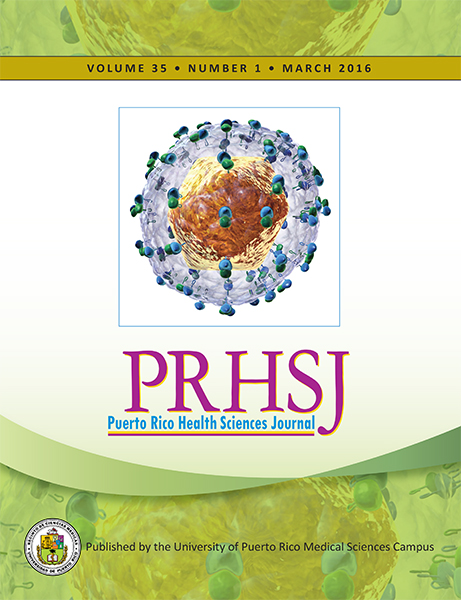Abstract
Objective: To evaluate the age distribution and selected characteristics of the cases recorded in the University of Puerto Rico (UPR) Surgical Database. Methods: All the surgical cases (from 1/1/2013 to 12/31/2013) in the Surgery Department’s database were examined. This database collects patient and procedural information from the surgical services of the UPR-affiliated hospitals (University District Hospital; University Pediatric Hospital; UPR Carolina Hospital; Oncologic Hospital (Dr. I. González Martínez), Pavia Hospital-colorectal service; and Auxilio Mutuo Hospital colorectal and oncologic services). The patients in the group were subdivided by age (<65 and 65 years or more). The difference between age groups was evaluated using a chi2, t-test, or ANOVA, whichever was appropriate, with a p-value less than 0.05 being considered significant. Results: Information on 5,263 surgical patients was available for the study period. The mean age was 48 years (±23 years), with 28% of the patients being over 65 years of age. The age group with the highest rate of surgery was that of 61 to 70 years. The gender distribution was found to be similar to that of the general population: 55%, female, and 45%, male. The distribution by surgical service was as follows: general surgery, 32%; colorectal surgery, 21%; oncologic surgery, 22%; and others, 25%. The surgeries were elective in 87% of the cases and emergency procedures in 13% of them. Complications were reported in 3% of the cases; the mortality rate was 1%. Conclusion: Despite the fact that only 14% of our population was 65 years of age or older, 28% of the patients requiring surgery were in this age group. Older patients now represent a significant proportion of the surgical workload. Our study found that 75% of the surgical procedures performed were in the areas of general, oncologic, and colorectal surgery.
Authors who publish with this journal agree to the following terms:
a. Authors retain copyright and grant the journal right of first publication with the work simultaneously licensed under a Creative Commons Attribution License that allows others to share the work with an acknowledgement of the work's authorship and initial publication in this journal.
b. Authors are able to enter into separate, additional contractual arrangements for the non-exclusive distribution of the journal's published version of the work (e.g., post it to an institutional repository or publish it in a book), with an acknowledgement of its initial publication in this journal.
c. Authors are permitted and encouraged to post their work online (e.g., in institutional repositories or on their website) prior to and during the submission process, as it can lead to productive exchanges, as well as earlier and greater citation of published work (See The Effect of Open Access).
